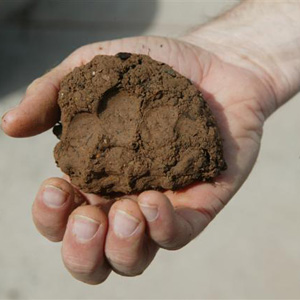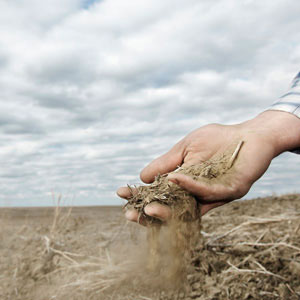My Cart: 0 item(s)
Determining Your Soil Type
There are many methods for determining what type of soil you have. One of the easiest is the “Squeeze Test”: Dig a small hole about 12 inches (30 cm) deep. Reach in and and grab a handful of the earth. Squeeze your handful tightly and then open your hand. If the soil falls apart quickly, you've got sand. If it stays together in a ball, you've got clay. If it feels soft and crumbly and is easy to work then you have loam.
You may also use the “Feel Test”: Dig a small hole about 12 inches (30 cm) deep. Grab a handful of the soil in one hand. If it is very dry, add a small amount of water to moisten it but be sure you’re not making mud. With your other hand, pinch the soil between your thumb and fingers. Rub it back and forth several times, taking note of the texture: a. If the soil is smooth and slick, you have clay. b. If the soil is gritty and you can feel individual particles falling away, you have sand. c. If the soil feels slightly gritty with some smoothness, you have loam. As the soil dries, continue to take note of the texture: a. Clay soil will feel floury. b. Sand soil will feel like sugar. c. Loam soil will also feel like flour but with some grit to it.
Another method is the “Clod Test”: Dig a small hole about 12 inches (30 cm) deep. a. If you have no troubles and the soil you remove from the earth falls apart as you dig at it, you have sand. b. If you feel like your shovel is about to break and you remove large clods (clumps of soil), you have clay. c. If you have no troubles digging into the soil and you remove small clods that break apart easily, you have loam. And after all that, if you still are unsure your soil type, you may wish to send it to a lab for analysis.
|



